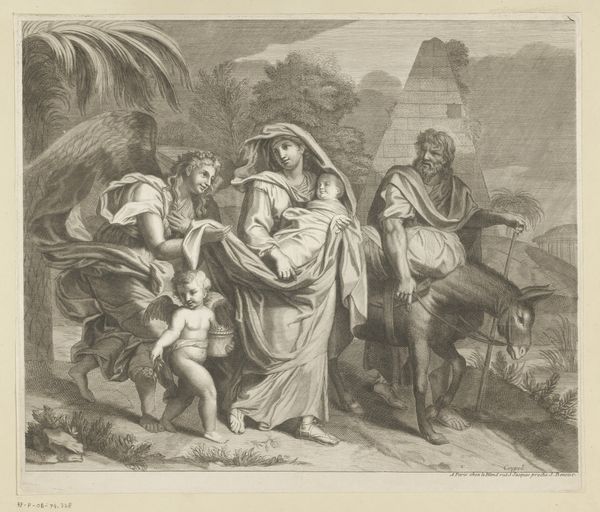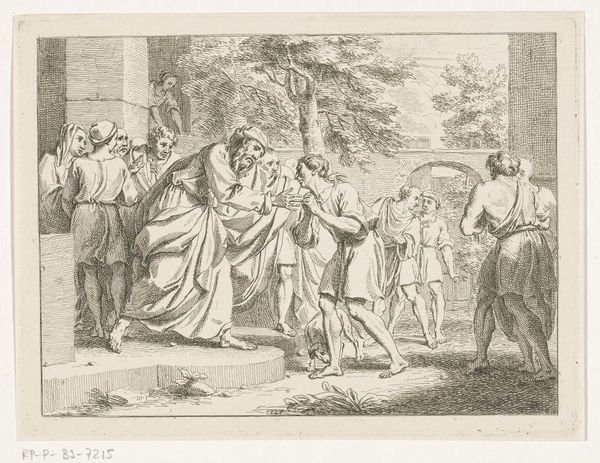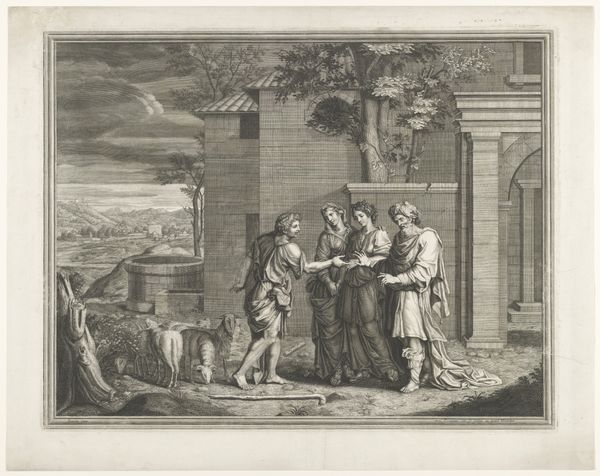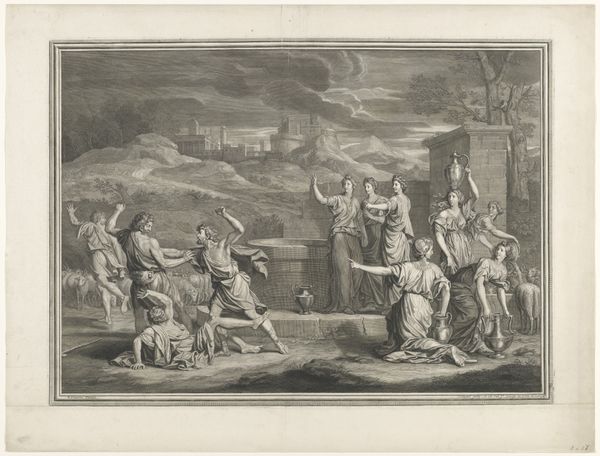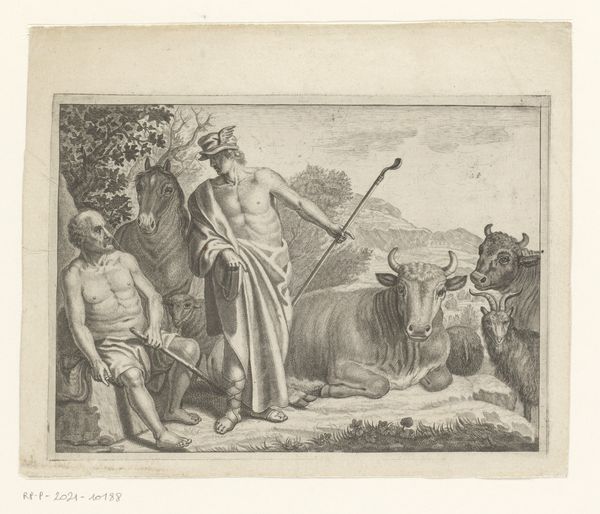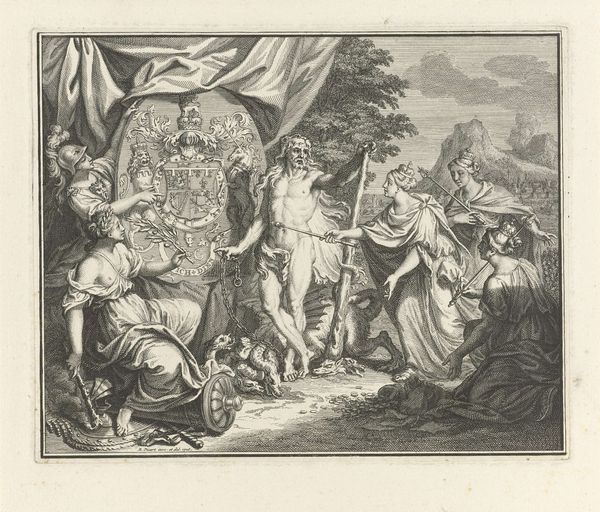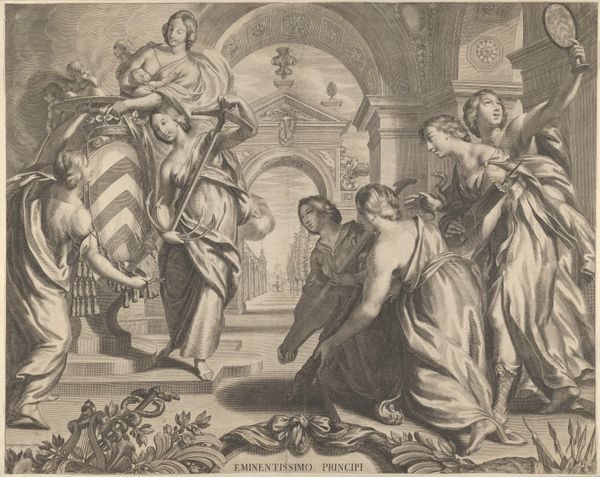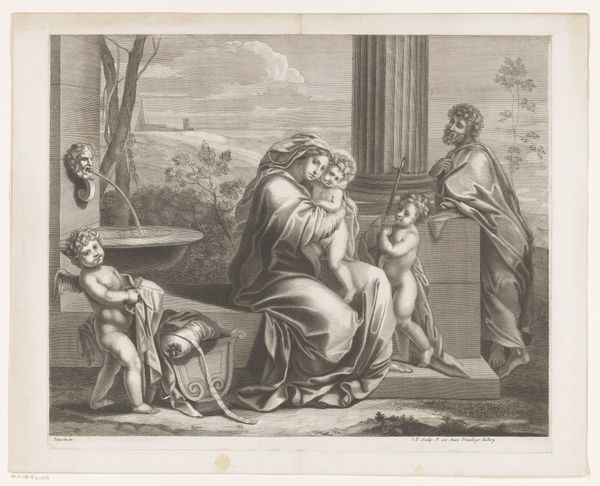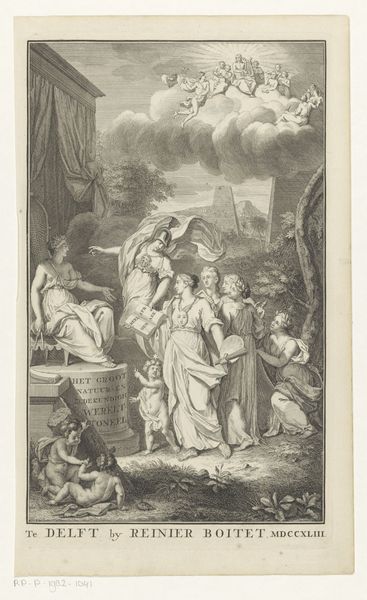
print, engraving
#
pencil drawn
#
narrative-art
#
baroque
# print
#
pencil sketch
#
landscape
#
charcoal drawing
#
figuration
#
pencil drawing
#
history-painting
#
engraving
#
pencil art
Dimensions: height 420 mm, width 505 mm
Copyright: Rijks Museum: Open Domain
Curator: Here we have "Vucht naar Egypte met engel" (Flight into Egypt with Angel) by De (II) Vernesson, dating from between 1650 and 1707. The print employs the technique of engraving to depict a moment from the Bible. Editor: It feels meticulously crafted. The intricate lines create a serene atmosphere despite the subject's inherent anxieties of exile, don't you think? The angel's protection, the family's weary resolve—all rendered with remarkable detail. Curator: The story of the flight into Egypt is potent. Consider the conditions for printmaking at the time, the economics involved in commissioning such pieces and who would have been able to acquire such prints and what status that communicated in 17th century Dutch society. Editor: From a formal point of view, look at how Vernesson directs our gaze using light and shadow. The angel, a central figure, bathed in a celestial glow contrasts sharply with the darkened corners of the landscape. The textural difference really brings our eyes there. Curator: Absolutely, but I find myself considering how the materials at Vernesson's disposal - the paper, inks, the very tools used to incise the image - influence not just the look of the piece, but the ability to reproduce religious images for the masses. It democratizes religious narratives, moving it potentially away from elite clergy influence into the homes of artisans and merchants. Editor: The very fact that we are analyzing a print shifts how we engage. We examine line, contrast, form in a way that is impossible to consider as distinctly in sculpture or fresco work of that same era. But it is hard to move beyond the interplay of divinity and humanity captured here— the visual contrasts do so much work. Curator: And those visual choices also served certain religious agendas. Baroque art was often propaganda for specific orders or to combat growing protestant ideas, with complex relationships with global trade. Every stylistic decision here existed inside of these material and ideological constraints. Editor: I hadn't considered all those factors, actually. It enriches the work, providing further interpretations on its social relevance. Thank you! Curator: You're welcome! Seeing a familiar image through another lens does change one's view on not just the image, but history and production.
Comments
No comments
Be the first to comment and join the conversation on the ultimate creative platform.


